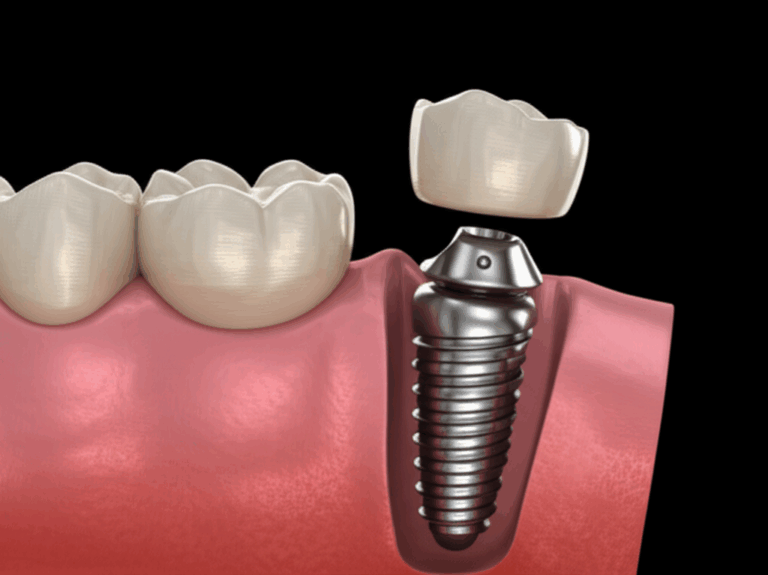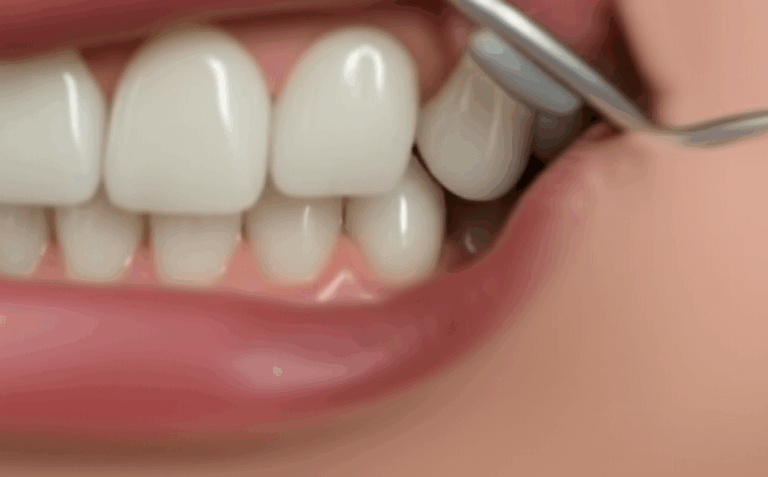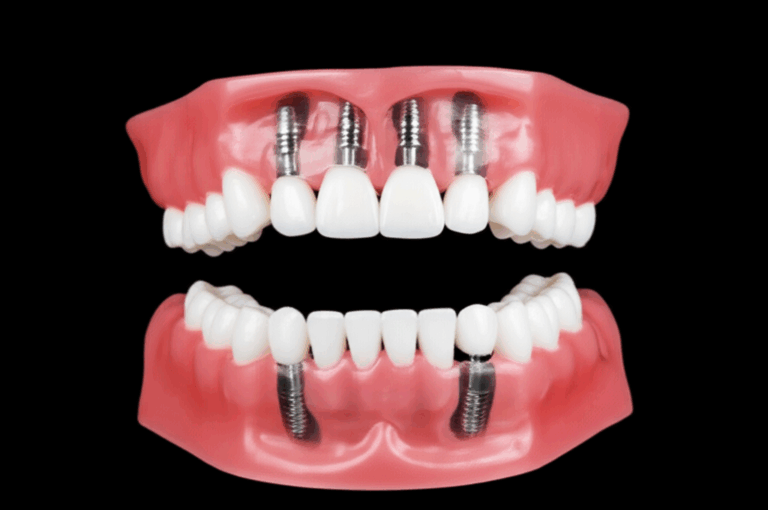
Can Dental Problems Cause Eye Problems? Understanding the Surprising Link
It started as a dull and steady ache in one of my upper teeth. Like most people, I tried to ignore it. I thought maybe it was just a little tooth sensitivity, and it would go away. But after a few days, something odd happened: I felt a nagging pressure behind my right eye. At first, I blamed it on too much time staring at my phone or computer. The tooth pain and the eye problem felt like two completely different things.
But I was wrong.
This experience sent me searching online and calling my dentist and doctor in a bit of panic. What I found was shocking but true: there's a real connection between the health of your mouth and the health of your eyes. Yes—a tooth infection can actually cause pain or even problems in your eye, and in some cases, it can even be dangerous.
The pain in my eye and the toothache were definitely linked. I want to share what I learned from this so you can spot the signs too, and know why you should never ignore a toothache.
Table of Contents
- How Dental Infections Can Affect Your Eyes: The Pathways of Spread
- Specific Dental Problems and Their Ocular Manifestations
- Recognizing the Warning Signs: When to Seek Medical Attention
- Prevention and Management: Protecting Your Teeth and Eyes
- Conclusion: Your Oral Health is Your Overall Health
How Dental Infections Can Affect Your Eyes: The Pathways of Spread
So, how can a problem in your mouth end up causing a problem in your eyes? It’s not magic—it’s just anatomy. When I finally saw my dentist, he showed me a picture of the human skull, and suddenly it made sense. He explained that your teeth, sinuses, nerves, and eyes are all packed very close together in your face. So, an issue in one spot can easily spread to another.
There are three main ways a dental problem can turn into an eye problem.
- Direct Spread of Infection: The Bad Neighbor Example
Imagine an infection in your upper tooth root as a bad neighbor living right under your eye. The wall separating them—the floor of your maxillary sinus—is actually very thin.
- Sinus Involvement: This is the most common pathway. A dental abscess (a pocket of pus at the tip of your tooth’s root) can eat into the bone. If it’s an upper tooth, the infection can break into your maxillary sinus, which sits underneath your eye. This causes maxillary sinusitis, a sinus infection from a tooth problem. When the infection reaches your sinus, it doesn’t have far to go to reach your eye. The pressure I felt behind my eye? That’s how it started for me—the swelling in my sinus was pressing on the area around my eye.
- Facial Cellulitis: Sometimes, the infection spreads sideways through your cheeks instead of going into your sinus. This is called cellulitis. When this happens, it can lead to periorbital cellulitis (infection of the eyelid and skin around the eye) or even worse, orbital cellulitis (infection of the fat and muscles behind the eye). This is very serious and needs medical attention right away.
- Vascular Spread: Bacteria Traveling in Your Blood
This way is less common, but very dangerous. My doctor explained that a bad tooth abscess is full of bacteria. If these bacteria get into your bloodstream, they can go anywhere in your body.
When bacteria travel like this, they can cause big problems, such as:
- Cavernous Sinus Thrombosis (CST): The cavernous sinus is a collection of veins behind your eyes. If bacteria from your infected tooth form a blood clot here, it’s life-threatening and can cause things like eye muscle paralysis, vision loss, or even stroke.
- Endophthalmitis: This is a severe infection inside the eyeball. It’s very rare for this to happen from a tooth, but it can occur. Bacteria in your blood settle in your eye and cause a fast, severe infection that can lead to blindness if not treated right away.
- Nerve Pathways and Referred Pain: Mixed-Up Signals
Sometimes, there’s no infection reaching your eye at all. Instead, your nerves mix up the signals. This is called referred pain.
The trigeminal nerve is a big nerve that gives feeling to your face, teeth, and areas around your eyes. If one part of this nerve (like the branch going to your tooth) is sending out pain signals, your brain might get confused and think the pain is coming from your eye too.
That’s why a wisdom tooth problem can sometimes feel like a headache behind your eye, or why a toothache might seem like it’s in your eye area. The pain is real, but the real problem is in your tooth or jaw—not your eye.
A similar thing happens with TMJ (jaw joint) disorder. If the joint connecting your jaw to your skull is inflamed or out of place, it can irritate the trigeminal nerve and cause all kinds of discomfort, including jaw pain, headaches, and what feels like eye strain.
Specific Dental Problems and Their Ocular Manifestations
While going through this, I learned different dental issues can cause a variety of eye symptoms, from mild to very serious. Here’s what to look out for.
Dental Abscess/Infection: The Main Cause
An abscess at the root of a tooth is the top reason for serious eye complications. If you have an untreated cavity or cracked tooth, bacteria can get inside and cause an infection.
Common eye symptoms to watch for:
- Pain: This can be a dull ache behind the eye or a sharp pain.
- Swelling and Redness: Your eyelid might get puffy and turn red.
- Blurred or Double Vision: Swelling behind the eye can press on the eye or muscles and make vision blurry.
- Hard to Move Your Eye: If you have pain or trouble moving your eye in any direction, this is a warning sign of a serious infection.
- Bulging Eye: If one eye sticks out more than the other, that’s a red flag. The infection behind the eye can push it forward.
If you have any of these symptoms along with a toothache, get medical help quickly. It could get worse fast.
Periodontal Disease (Gum Disease)
I used to think gum disease only meant bleeding gums. It turns out it’s a long-term problem that can affect your whole body. Severe gum disease is a state of ongoing inflammation in your mouth.
This inflammation can make your body work overtime, and it makes it easier for bacteria to get into your blood. While this doesn’t usually cause dramatic infections like an abscess, it increases the risk of other problems, possibly even inflammation in your eyes (like uveitis).
Sinusitis Caused by a Tooth Infection
This is what happened to me. When a top tooth infection breaks through to the sinus, you get what’s called odontogenic sinusitis. Common symptoms include:
- Pain and pressure in your cheekbone.
- Pressure or pain behind the eye on the same side.
- Headache, often on just one side.
- Sometimes stuffy nose or runny nose (but not always).
This can feel just like a regular sinus infection, but regular sinus medicine won’t help—you have to fix the tooth before you feel better.
TMJ Disorders and Impacted Wisdom Teeth
These mostly cause referred pain (mixed nerve signals), not spreading infections.
- TMJ Disorders: Grinding your teeth, clenching your jaw, or a crooked bite can cause jaw joint problems, which may cause pain in your jaw, temples, ears, and eyes. It often feels like a dull eye ache that doesn’t go away, even with eye rest.
- Impacted Wisdom Teeth: If a wisdom tooth is stuck and can’t come through, it can get swollen or infected. This can cause pressure and pain that goes up the side of your face, or a headache behind the eye.
When my tooth abscess was finally fixed with a root canal, my dentist put a permanent cap on it to protect it from future infections. This protection, often made in a special crown and bridge lab, is really important for keeping the tooth healthy.
Recognizing the Warning Signs: When to Seek Medical Attention
This part is most important. Knowing when things go from “annoying” to “emergency” could save your sight, or even your life. A tooth infection spreading to the eye area can get worse very quickly.
Urgent, Go-to-the-ER Symptoms
If you have a toothache with any of the following, don’t wait. Go right to the Emergency Room.
- Eye swelling or redness that gets worse quickly, especially if the eyelid is so swollen you can't open it.
- Any changes in your vision, like blurriness, double vision, or dim vision.
- A bulging eye. Compare both eyes in the mirror.
- Can’t move your eye normally (can’t look up, down, side to side, or it hurts to move your eye).
- High fever, chills, or a severe headache with your tooth and eye pain.
- Confusion or acting sluggish (the infection could be getting into your brain).
These are danger signs of orbital cellulitis or cavernous sinus thrombosis. These conditions need strong antibiotics and sometimes surgery right away.
Who Should You Call?
Figuring out who to see can be confusing. Here’s what I learned:
- Just tooth pain: See your dentist.
- Tooth pain plus mild eye symptoms (like pressure or dull ache): Call your dentist first, but also book a visit with an eye doctor. Both need to know what’s going on.
- Any of the urgent symptoms above: Go straight to the ER. The hospital can do scans and bring in dental, eye, and infection experts.
Prevention and Management: Protecting Your Teeth and Eyes
After this scary experience, I’m now a believer in taking good care of my mouth. It was painful, expensive, and frightening—but you can avoid it.
Keep Good Oral Habits
It sounds simple, but this is the best way to stop these problems before they start. The top move to avoid what I went through is just to do good Dental Care:
- Brush your teeth twice a day for two minutes, using fluoride toothpaste.
- Floss daily. Don’t skip it! Flossing gets bacteria out from between teeth—where abscesses like to form.
- See your dentist for check-ups and cleanings every six months, if you can. This helps your dentist catch small problems (like cavities) before they become big infections.
Fix Dental Problems Early
This is where I messed up. I let a “minor” toothache go for too long. A cavity won’t fix itself. Gum disease won’t just go away on its own. Small dental problems nearly always turn into bigger, more painful, and more expensive problems if you wait too long. If your dentist says you need a filling, a root canal, or to treat gum disease, do it as soon as you can.
Know Your Risk Factors
Some people are at higher risk for infections spreading. If your immune system isn’t strong (because of a health problem or medicine), or you have uncontrolled diabetes, your body may not fight dental infections as well. This makes it even more important to take care of your mouth, and to get checked as soon as you notice any pain or swelling.
Conclusion: Your Oral Health is Your Overall Health
From my simple toothache that almost led to an eye emergency, I learned a big lesson: your body is connected in amazing ways. Your mouth’s health can seriously affect other parts of your body—including your eyes.
The connection between dental problems and eye problems is not just an old saying. It’s real and based on how our bodies work. The worst problems are rare, but when they happen, they’re serious. The bright side is, you can usually prevent these problems.
Pay attention to your body. Don’t shrug off a toothache. If you have tooth pain and something weird going on with your eye, take it seriously. See your dentist and your doctor. Taking care of your mouth helps protect your whole body—including your eyes and your vision!








